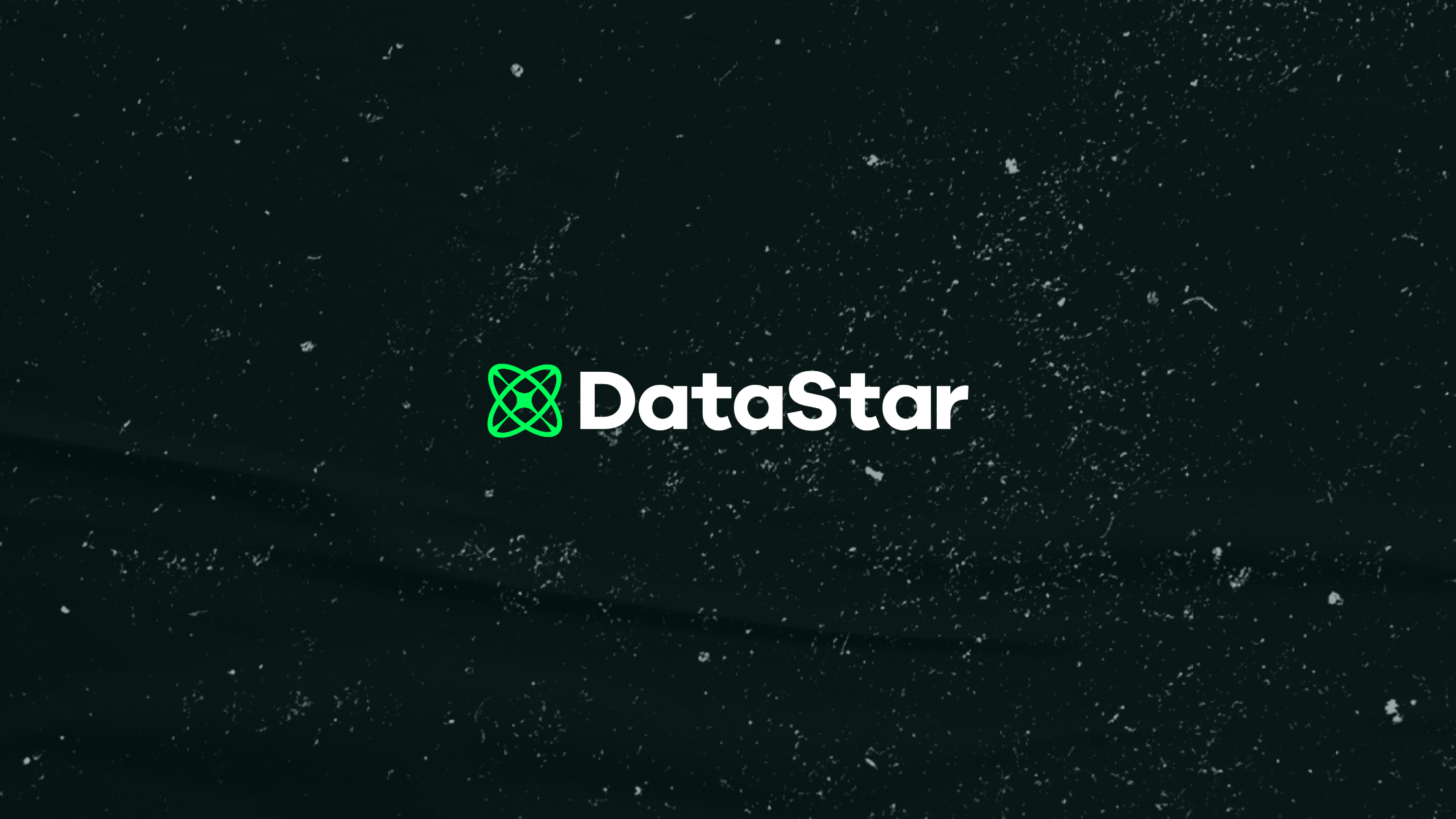
Published by
Published on
November 20, 2025





A Fortune 500 manufacturer needed to build supply chain modeling capability fast. By combining DataStar's AI-powered platform with a new team member's determination, they went from legacy desktop tools to cloud-native workflows—delivering faster model building and team-wide scalability.
A global manufacturing company faced a common supply chain challenge: their team needed to deliver network optimization insights quickly, but their processes relied on siloed desktop tools and required deep technical expertise. When a new supply chain strategy manager joined the team with no prior modeling experience, the company made a strategic bet—that DataStar's accessible, AI-powered design could empower their modeling team quickly without months of training or consultant dependency.
The bet paid off. Within months, they had an operational modeling workflow, standardized processes taking shape, and a clear path to faster scenario building.
The supply chain strategy team supported internal customers across a global corporation operating in 90+ countries. They needed to optimize networks, address capacity constraints, and respond to evolving business needs across a complex, multi-product portfolio spanning traditional and emerging technologies.
Key obstacles:
The supply chain strategy manager explained the challenges of the legacy state: "Previously, we were working in siloed applications—forcing us to jump from data source, over to a separate ETL tool, and then added steps like uploading into our models. There were multiple processes in different places.”
The company adopted DataStar to eliminate tool silos, accelerate onboarding, and build repeatable workflows. Three elements proved critical:
1. AI-Powered Accessibility Lowered Technical Barriers
DataStar's AI enabled team members to build complex data workflows using natural language—no advanced SQL or ETL expertise required.
"This whole thing would have been impossible for me without the AI in DataStar. I'm new to supply chain modelling. I'm new to the Optilogic software. I have a basic understanding of SQL language, but nothing amazing. So being able to create my macros and tasks using DataStar AI has been an absolute game changer." — Supply Chain Strategy Manager
2. Native Integration Eliminated Workflow Friction
DataStar's tight integration with Cosmic Frog removed the need to jump between tools, streamlining the path from raw data to model-ready insights.
"I think one of the big attractions with DataStar is that it's integrated with your Cosmic Frog model. It's designed for that very purpose. So while we were using those other applications we thought they were relatively adequate; I think this just takes it one step higher and just makes it much more convenient and usable."
3. Responsive Partnership Accelerated Problem-Solving
When unique challenges emerged—like data files in foreign languages—the Optilogic team built custom solutions rather than simply troubleshooting.
"The support has been great... it has gone above and beyond what I might have been expecting. I get the feeling that the Optilogic team likes to be challenged. If I give them an interesting use case—something they've maybe not thought about before—they'll go solve it and come back with an answer."
Rapid Capability Building
The company went from zero DataStar experience to operational modeling workflows in months—with a non-technical user leading the charge.
"I would definitely say give it a go. I think I've said before, if I can do it, anyone can do it... It's very user friendly. And just with some basic self-learning, I was able to get into it quite quickly."
10x Faster Model Building on the Horizon
By creating standardized, reusable macros, the company is building for enterprise scale and speed.
"Once we have standardized macros in place that we can just run for different projects regardless of what the data looks like... we can do those data quality checks, we can do those transformations, we can get the data model ready. That is going to save time."
The projected impact:
"What maybe is taking us a few weeks right now to build out that model to get the data ready to upload everything—that can be done like in a day or two at the most."
Expanding Use Cases Beyond Data Prep
The team sees DataStar's potential extending to post-model analysis and decision support—not just ETL.
"I think there's so many other use cases, so not just helping to prepare data to upload into Cosmic Frog models, but then pulling it back out the other way... I've seen cases where other customers have run DataStar macros to help with infeasibility issues, even starting to look at what the output tables are telling us. How can we more scientifically use that to drive recommendations and decisions."
"I think we're just scratching the surface right now, but I know the potential is pretty big in what we can do."
A Foundation for Team-Wide Adoption
While currently driven by one user, the company is building repeatable processes designed for the entire team to leverage—eliminating single points of failure and enabling continuous improvement.
"DataStar has made a huge difference for us. The real power is in the potential—how we'll use it going forward and how we can partner with Optilogic's expertise to keep advancing."
"We trust the expertise and the technology from Optilogic for helping us move forward with our supply chain modelling. It's a journey for us where we're always looking to think of new solutions and new ideas to support our internal customers and improve our supply chains —and DataStar is a huge part of that. We do have a strong relationship with the Optilogic support team."
Ready to accelerate your supply chain modeling capability?
A Fortune 500 manufacturer needed to build supply chain modeling capability fast. By combining DataStar's AI-powered platform with a new team member's determination, they went from legacy desktop tools to cloud-native workflows—delivering faster model building and team-wide scalability.
A global manufacturing company faced a common supply chain challenge: their team needed to deliver network optimization insights quickly, but their processes relied on siloed desktop tools and required deep technical expertise. When a new supply chain strategy manager joined the team with no prior modeling experience, the company made a strategic bet—that DataStar's accessible, AI-powered design could empower their modeling team quickly without months of training or consultant dependency.
The bet paid off. Within months, they had an operational modeling workflow, standardized processes taking shape, and a clear path to faster scenario building.
The supply chain strategy team supported internal customers across a global corporation operating in 90+ countries. They needed to optimize networks, address capacity constraints, and respond to evolving business needs across a complex, multi-product portfolio spanning traditional and emerging technologies.
Key obstacles:
The supply chain strategy manager explained the challenges of the legacy state: "Previously, we were working in siloed applications—forcing us to jump from data source, over to a separate ETL tool, and then added steps like uploading into our models. There were multiple processes in different places.”
The company adopted DataStar to eliminate tool silos, accelerate onboarding, and build repeatable workflows. Three elements proved critical:
1. AI-Powered Accessibility Lowered Technical Barriers
DataStar's AI enabled team members to build complex data workflows using natural language—no advanced SQL or ETL expertise required.
"This whole thing would have been impossible for me without the AI in DataStar. I'm new to supply chain modelling. I'm new to the Optilogic software. I have a basic understanding of SQL language, but nothing amazing. So being able to create my macros and tasks using DataStar AI has been an absolute game changer." — Supply Chain Strategy Manager
2. Native Integration Eliminated Workflow Friction
DataStar's tight integration with Cosmic Frog removed the need to jump between tools, streamlining the path from raw data to model-ready insights.
"I think one of the big attractions with DataStar is that it's integrated with your Cosmic Frog model. It's designed for that very purpose. So while we were using those other applications we thought they were relatively adequate; I think this just takes it one step higher and just makes it much more convenient and usable."
3. Responsive Partnership Accelerated Problem-Solving
When unique challenges emerged—like data files in foreign languages—the Optilogic team built custom solutions rather than simply troubleshooting.
"The support has been great... it has gone above and beyond what I might have been expecting. I get the feeling that the Optilogic team likes to be challenged. If I give them an interesting use case—something they've maybe not thought about before—they'll go solve it and come back with an answer."
Rapid Capability Building
The company went from zero DataStar experience to operational modeling workflows in months—with a non-technical user leading the charge.
"I would definitely say give it a go. I think I've said before, if I can do it, anyone can do it... It's very user friendly. And just with some basic self-learning, I was able to get into it quite quickly."
10x Faster Model Building on the Horizon
By creating standardized, reusable macros, the company is building for enterprise scale and speed.
"Once we have standardized macros in place that we can just run for different projects regardless of what the data looks like... we can do those data quality checks, we can do those transformations, we can get the data model ready. That is going to save time."
The projected impact:
"What maybe is taking us a few weeks right now to build out that model to get the data ready to upload everything—that can be done like in a day or two at the most."
Expanding Use Cases Beyond Data Prep
The team sees DataStar's potential extending to post-model analysis and decision support—not just ETL.
"I think there's so many other use cases, so not just helping to prepare data to upload into Cosmic Frog models, but then pulling it back out the other way... I've seen cases where other customers have run DataStar macros to help with infeasibility issues, even starting to look at what the output tables are telling us. How can we more scientifically use that to drive recommendations and decisions."
"I think we're just scratching the surface right now, but I know the potential is pretty big in what we can do."
A Foundation for Team-Wide Adoption
While currently driven by one user, the company is building repeatable processes designed for the entire team to leverage—eliminating single points of failure and enabling continuous improvement.
"DataStar has made a huge difference for us. The real power is in the potential—how we'll use it going forward and how we can partner with Optilogic's expertise to keep advancing."
"We trust the expertise and the technology from Optilogic for helping us move forward with our supply chain modelling. It's a journey for us where we're always looking to think of new solutions and new ideas to support our internal customers and improve our supply chains —and DataStar is a huge part of that. We do have a strong relationship with the Optilogic support team."
Ready to accelerate your supply chain modeling capability?
Fill out the form to unlock the full content
Be among the first to explore composable tools that will help you create data agility, resulting in dramatically accelerated modeling and decision-making. Enter your information to request a personal demo!


.png)

.png)